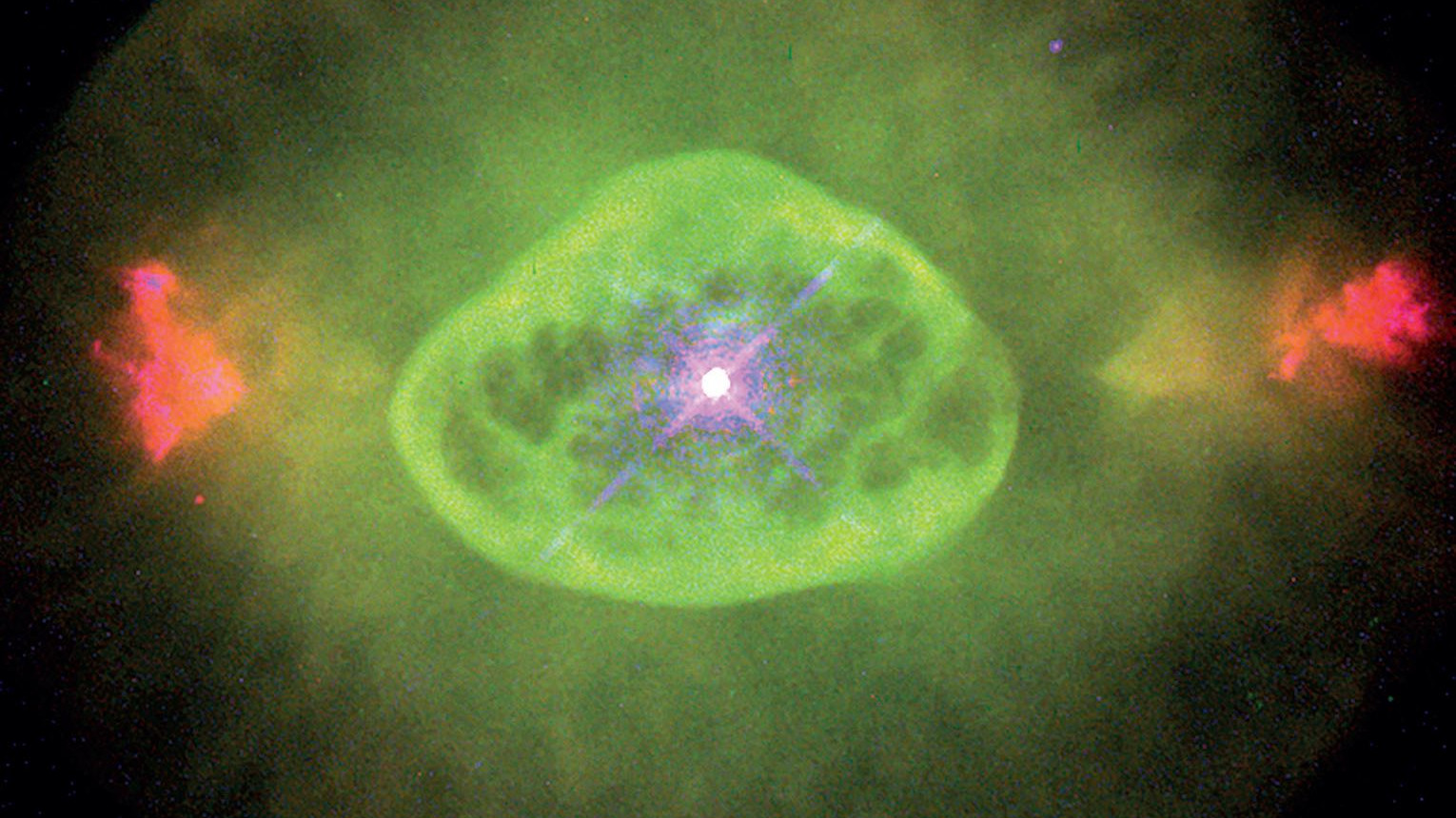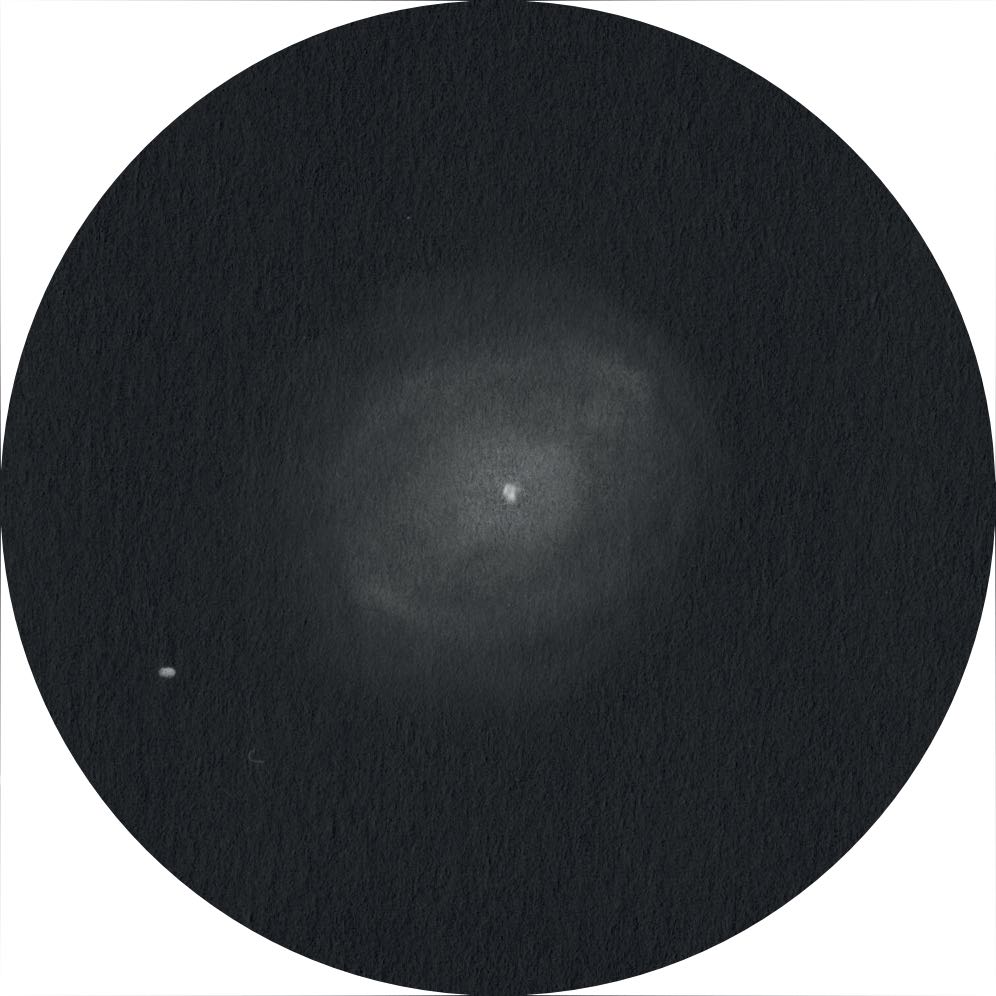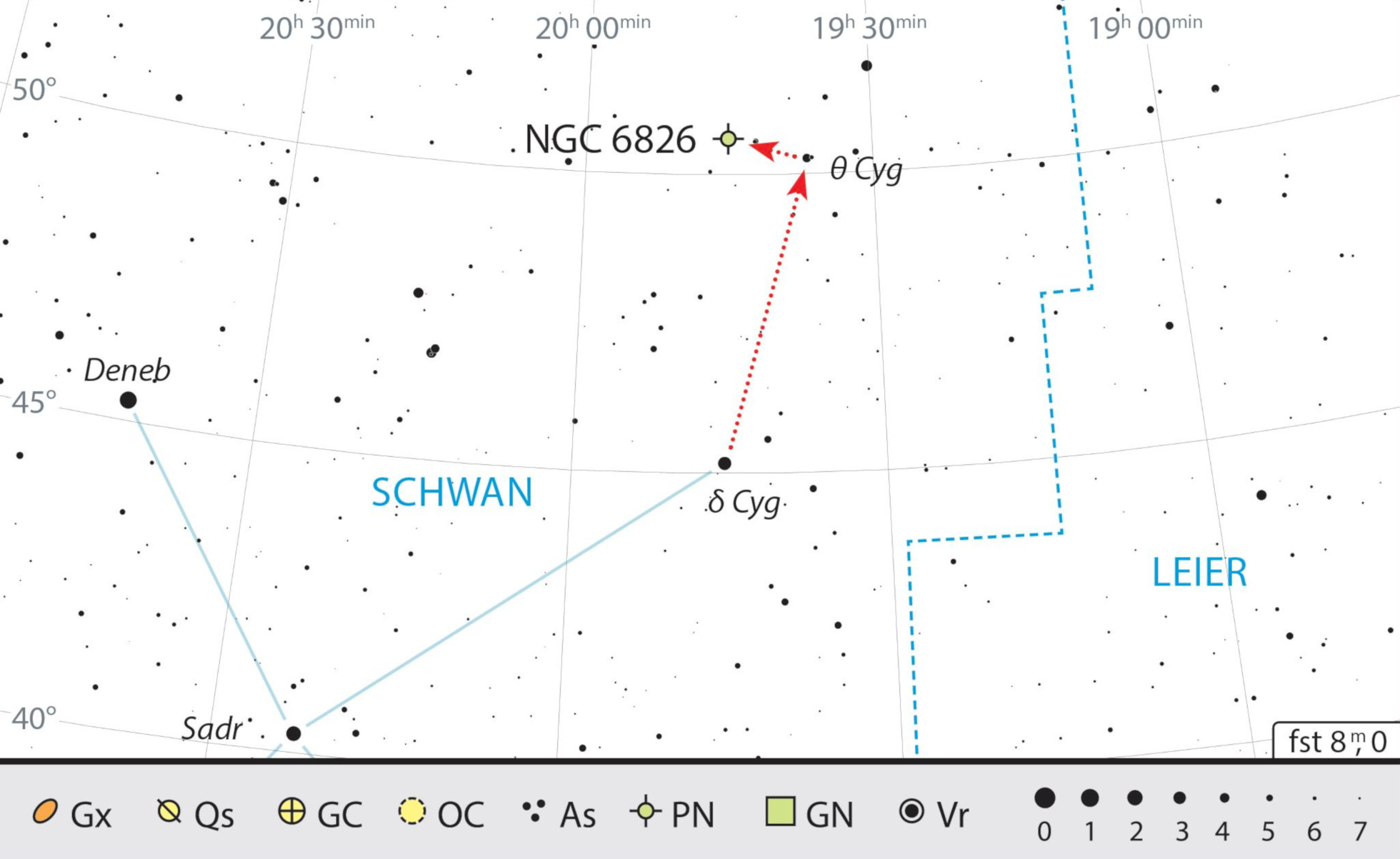The blinking nebula
It’s not always easy to see a planetary nebula’s central star; but in the case of NGC 6826 in Cygnus, the star actually lets the nebula disappear.
 The blinking planetary nebula NGC 6826, as Hubble sees it. B. Balick (University of Washington), J. Alexander (University of Washington), A. Hajian (U.S. Naval Observatory), Y. Tertian (Cornell University). M. Perinotto (University of Florence), P. Patriarchi (Arcetri Observatory) and NASA/ESA
The blinking planetary nebula NGC 6826, as Hubble sees it. B. Balick (University of Washington), J. Alexander (University of Washington), A. Hajian (U.S. Naval Observatory), Y. Tertian (Cornell University). M. Perinotto (University of Florence), P. Patriarchi (Arcetri Observatory) and NASA/ESAAn object that disappears when you look at it directly, and appears again when you look past it? Visual astronomy is rich in fascinating objects and NGC 6826, a planetary nebula in the constellation of Cygnus, is certainly one of them. Due to its changing appearance, it is commonly known as the “blinking planetary".
Over Cygnus’ wing
 Drawing of NGC 6826.
Hans-Jürgen Merk
Drawing of NGC 6826.
Hans-Jürgen MerkNGC 6826 is, at magnitude 8.8, just as bright as its famous fellow planetary nebula M57, but it’s quite small at just 0.4’ across. This makes it appear as a stellar object at small magnifications, which can easily lead to it being mistaken for one of the stars in its immediate vicinity. Even the use of a GoTo system does not 100% guarantee that the nebula will immediately appear in your field of view as the object you’re looking for. To locate NGC 6826 without electronic aids, you should start from δ Cygni – the bright northern wing star in Cygnus, and head north to θ Cygni (or 13 Cygni), a mag. 4 star that is easily recognisable because it is accompanied by a slightly fainter star. 1° north-east of here lies 16 Cygni, which also has a nearby companion.
To find NGC 6826, you should now head east across this region that contains very few stars, until you come to a single point of light which has the appearance of a faint star.
Blinking with averted vision
Whether this is actually your sought-after planetary nebula can now be tested with the blinking effect mentioned at the start of this article. This author was most impressed with the results at 80× magnification. If you look past the light point, you can see a weak halo around the bright core, a clear indication of a nebula-like object. If you then look directly at the star again, the nebula surrounding it disappears. If you rapidly alternate with this so-called averted vision technique, you get the impression of switching the nebula on and off – NGC 6826 blinks.
NGC 6826 is 3,000 light-years from Earth and a few thousand years old. With a brightness of magnitude 10.7, the central star is one of the brightest of all known planetary nebulae. The actual size of the nebula may be less than half a light-year. Planetary nebulae arise when a Sun-like star expels its outer shell into space at the end of its evolution, which is then stimulated to glow through the intense radiation of the still hot, exposed core.
 NGC 6826 can be found via the stars δ Cygni and θ Cygni. J. Scholten
NGC 6826 can be found via the stars δ Cygni and θ Cygni. J. ScholtenAuthor: Karl-Peter Julius / Licence: Oculum-Verlag GmbH
